Yamaha SY-2- Owned from December 2000 - February 2004, bought and sold for $150. Serial number 1771.
This was a sort of pointless impulse buy from the days when I didn't really know where I was going in terms of hardware
purchases. But it was interesting enough, and now that it's actually gone I don't regret owning it.
Anyway, the SY-2 was Yamaha's second synth after the SY-1. It came out in 1975 and was essentially an SY-1 in a road case
(which includes some weird screw-on metal legs) with a slightly different (better?) feature set. It's a very strange, very
well-built, very heavy synth, weighing nearly 50 lbs.
It's a partially-editable preset monophonic synth with aftertouch and bunch of ugly colored tabs for sound selection and
basic editing (just like the other Yamaha models of the period). It only has a mono output, switchable between high and low
levels, and a foot pedal jack: no midi or CV or anything like that.
It has one VCO with controls for octave selection, waveform (saw or pulse, not controlled from the panel), pulsewidth, PWM
(with its own non-adjustable LFO, again it's not controlled from the panel), portamento, and vibrato (triangle wave only,
pretty small modulation depth but it goes very fast). There are two resonant filters, a lowpass followed by a highpass, both
2 pole. Dual filters are a lovely thing to have in a synth, but unfortunately it's not a very common feature. The filters
can be controlled by the foot pedal, aftertouch, and a filter envelope. The filter envelope only has attack, decay, and
depth parameters but inside it appears to be a full ADSR style envelope. It seems to be able to control the filters in
different ways depending on the preset. The vibrato LFO can modulate the filters as well on some presets. The VCA has its
own ADSR envelope as well (fully adjustable, unlike the filter envelope).
It's a pretty simple synth but it can sound wild and very unique. When the vibrato is turned to the highest speed it has
more of a distorted, disharmonic sound. The dual resonant filters are amazing, especially when controlled by the foot pedal
or aftertouch. The switches can also be switched very quickly and conveniently to add interesting realtime effects (in
particular the four octave switches can be "played" to make an arpeggiated sort of sound). Add N to (X) use it a lot in
their music and I can usually pick out its very distinct sound.
Inside, the synth is very well built. The entire case is made out of wood and although there are lots of wires, everything
is very neatly bundled. The VCO, VCA, VCFs, and envelopes are little black modules on the main circuit board. There are two
stacked boards containing a bunch of diodes and resistors for the presets (it should be fairly easy to wire up an external
box to control all the parameters). The aftertouch is optical: a tinted piece of glass moves between a light bulb and a
sensor.
Mine, however, had a few problems. As with any ancient synth, the filter capacitors are dried up. But it was also way out
of tune, the tuning knob didn't work, and the envelope didn't have a release phase. I turned on the portamento and was
quite surprised to hear the pitch start at 0 Hz, go up to the proper note, and then back down to 0 Hz once released. I went
on a long, desperate search for a service manual and to my surprise, actually found one. I messed around with it but due to
my ineptitude, couldn't fix the very simple circuit that was causing the problems. It turned out that while I replaced the
bad op amp, there was a bad transistor too.. And the no release problem seems to be a bad sample and hold circuit- when
coupled with the linear VCO it produces a very interesting effect that I kind of like. The service manual is very
interesting, even describing the basics of analog synthesizers (it's not like synths were particularly new in 1975, I don't
see why they felt it necessary to describe what a synthesizer is!). It's got full schematics, circuit descriptions,
diagrams, parts list, etc.
Overall the SY-2 is a very interesting and strange synth but it wasn't (and wouldn't be, even fully functional) particularly
useful for what I do. It was great for playing with but it didn't hold a lot of long-term interest to me. It wouldn't be
very hard to add CV/gate ins and outs, but seeing as how the VCO is linear it would need a special converter. It would also
be pretty easy to add additional controls for PWM, filter LFO modulation, and whatever else can't be controlled from the
panel.
I sold my SY-2 to Scott Rider so that he could do some experiments with the potted
modules to determine how they're related to the chips used in the CS series. I'll post more about that (or link to his page)
as information becomes available.
pictures:
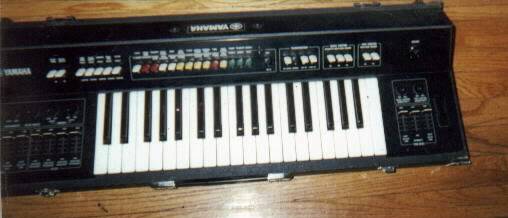
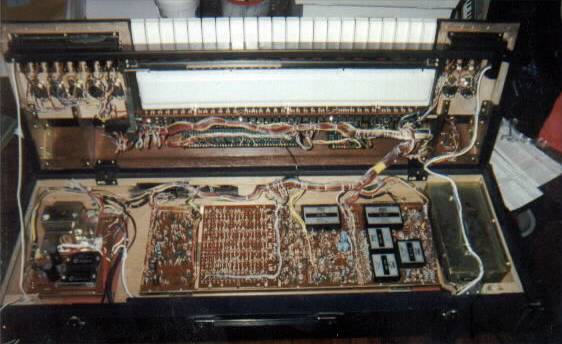
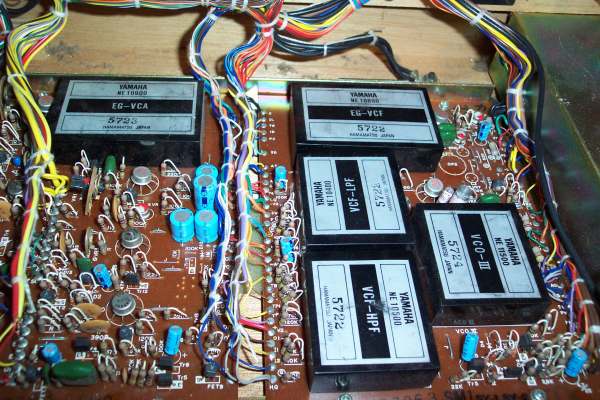
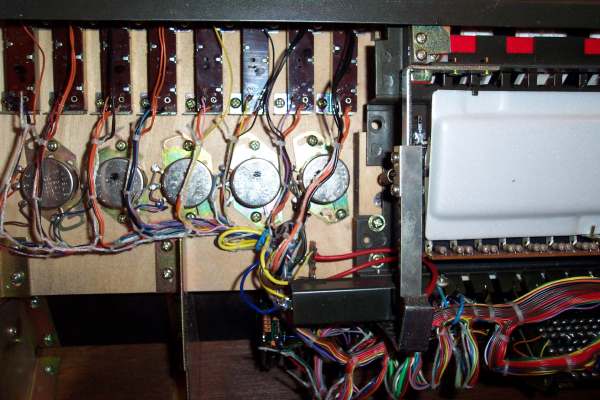
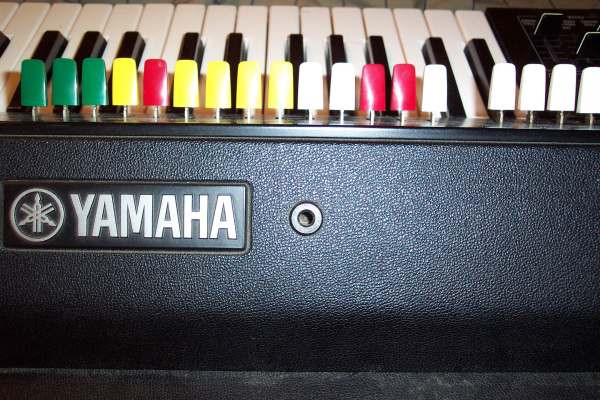
sounds:
SY-2- edited mix of filter sweeps, LFO modulation, and random bleeps (produced by hitting a bunch of
notes, etc. not by fancy programming).
links:
Yamaha has user manuals for nearly all of their products available here: Yamaha Manual Library (English)
back to synth index




